SECTION THREE
I chose the word administration over justice because justice is the goal, and is often imperfectly achieved. It certainly was not achieved during the era when the gorgeous courthouse was built in 1872.
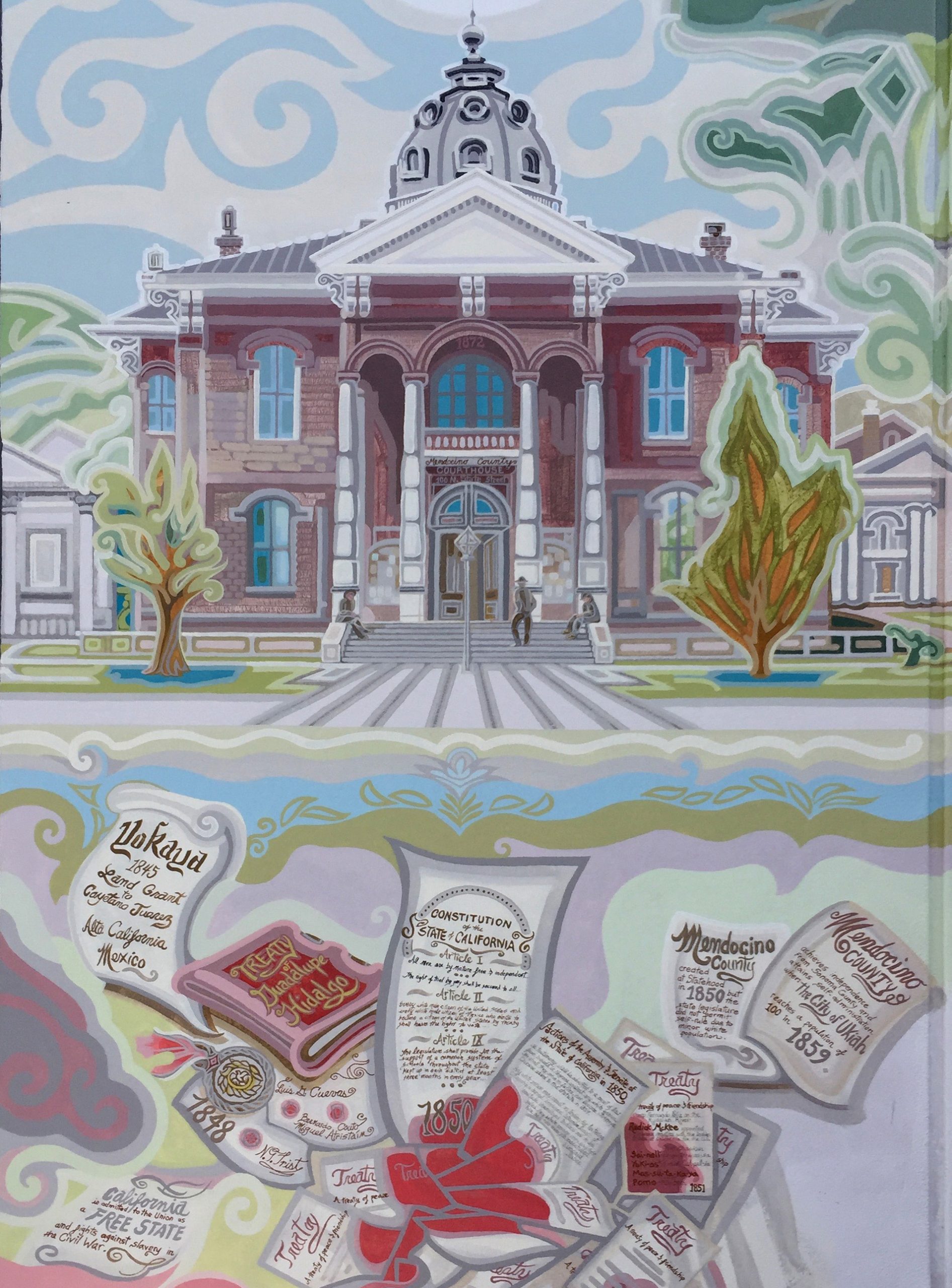
Mexican land grant
On the left is the land grant bestowing the Ukiah Valley upon Cayetano Juarez, who had been a soldier at the Presidio in San Francisco, by the government of Mexico, in payment for services in 1845. The name “Ukiah” comes from Spanish interpretation of a Native term for “deep valley” or “southern valley” hence Rancho Yokaya, which extends from southern Ukiah up into Redwood Valley.
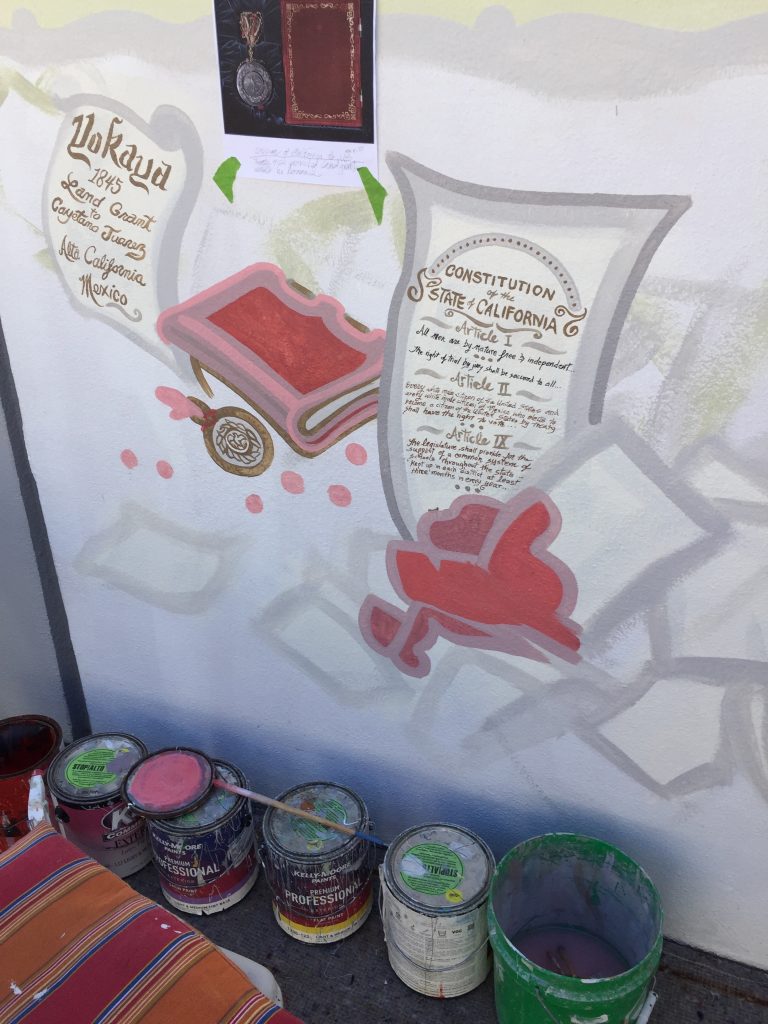

Statehood
The Treaty of Guadalupe Hidalgo marked the end of the Mexican-American War (1846 – 1848) and brought California into the United States. I painted the state constitution from the original document which was produced in English and Spanish, because that was what everyone in the region was already speaking.
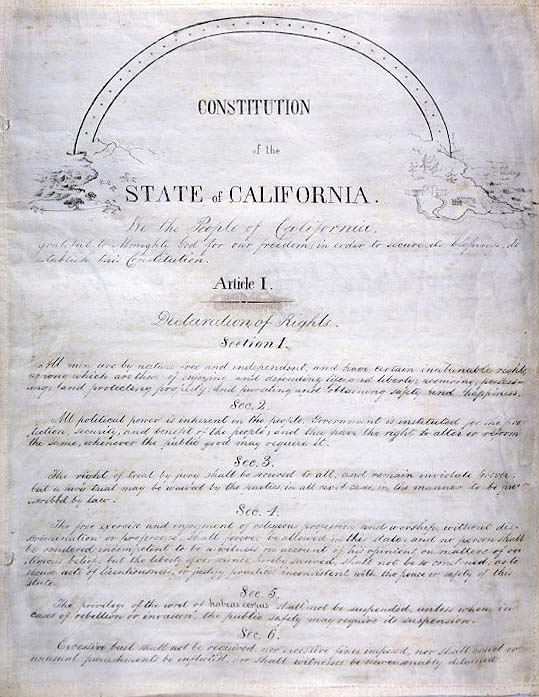
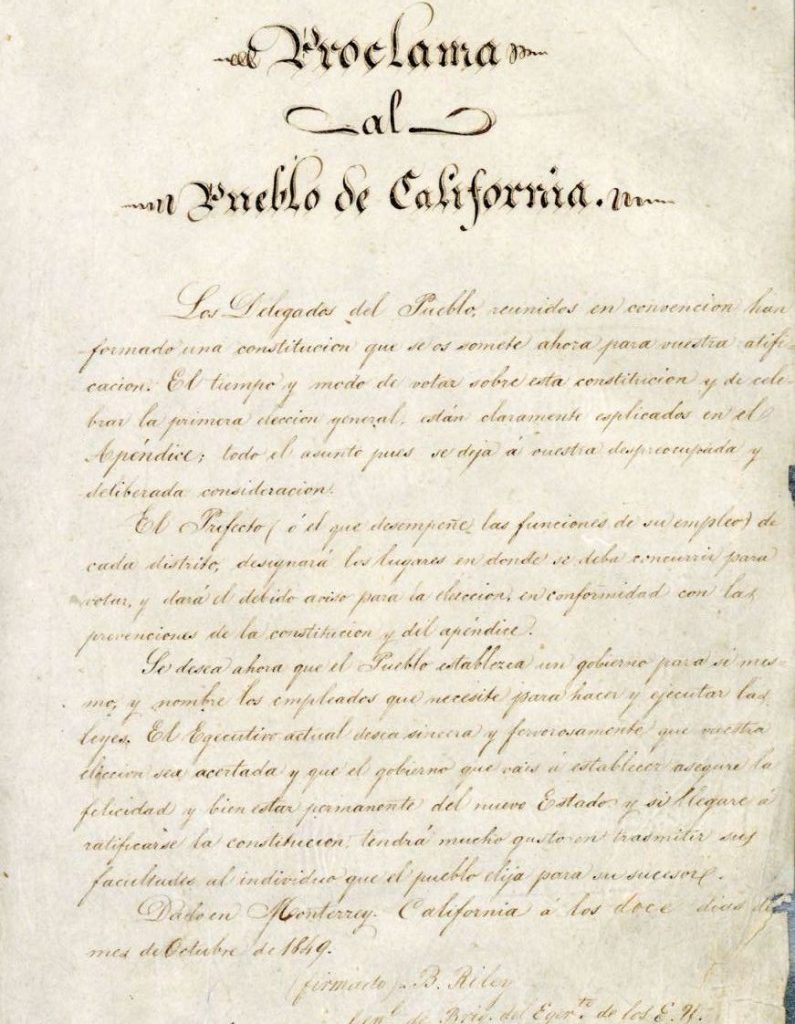
Almost immediately, European-American settlers come to California in great numbers following the 1849 Gold Rush.
The beautiful courthouse was built when Ukiah’s population numbered only in the hundreds. It was a demonstration of pride in one’s community, pride in self-governance, and a statement of the grandeur of the institutions it housed.
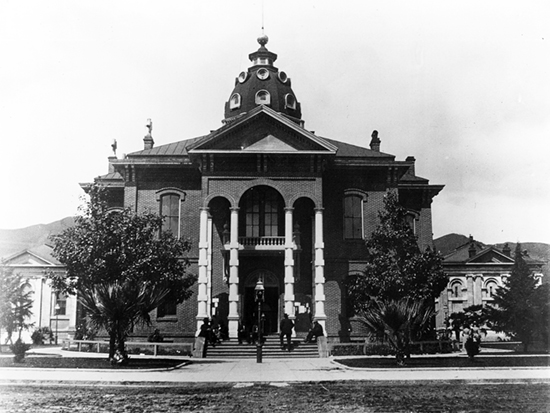
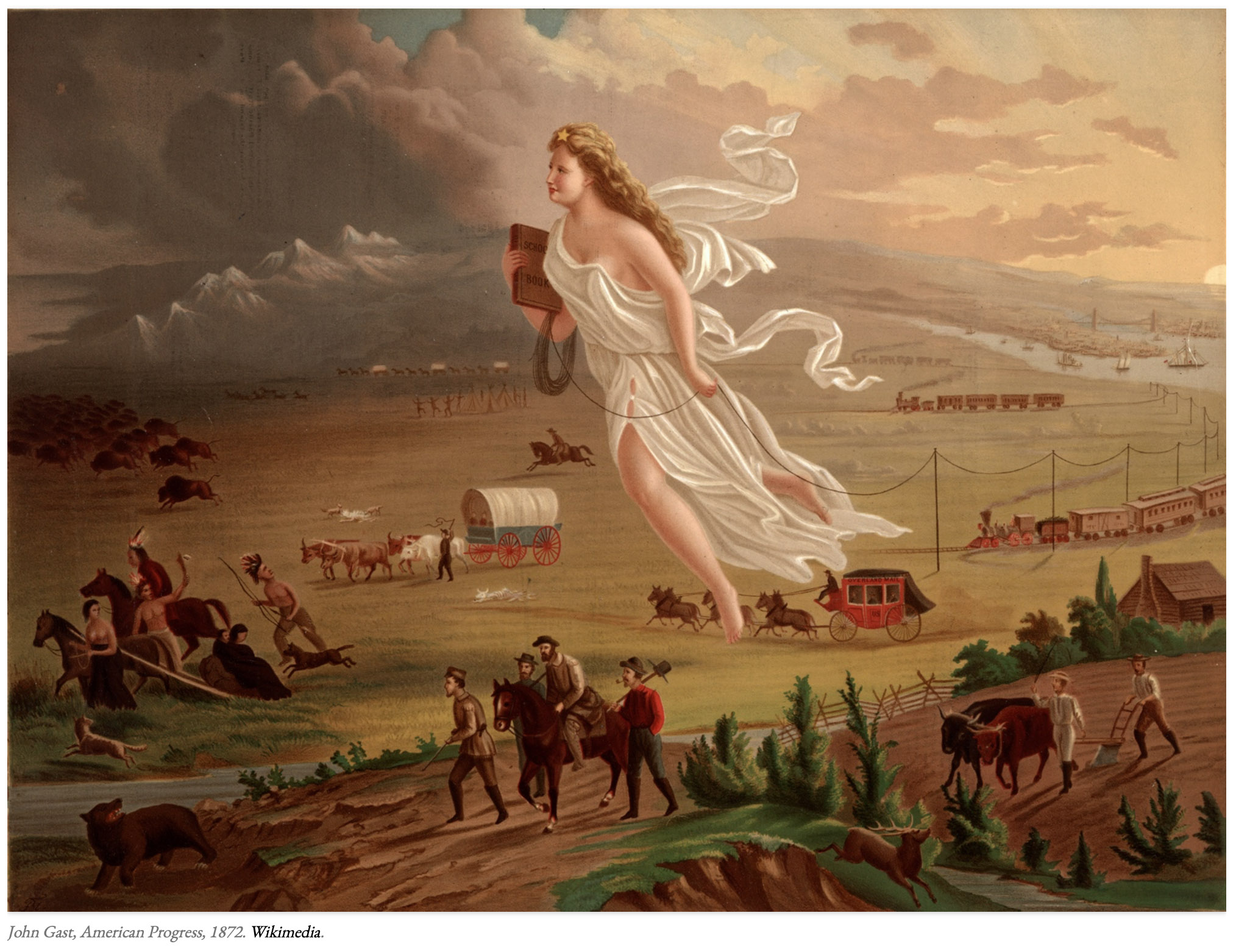
But there’s a dark side to much of America’s early history including ours. The widely held concept of “Manifest Destiny” was that Western Civilization – that of Europe going back to Classical Antiquity – was superior to Native American (or any indigenous) culture and was “destined” to take over all of the United States. Notice in the painting above:
- The woman (dressed like a blonde Greek statue) is bringing boats, bridges, trains and is stringing telegraph wire, all indicating progress.
- She and the settlers are bringing light and pushing Native people, animals, and herds of bison into darkness and oblivion.
Slavery
A point of pride is that California entered the Union as a free (anti-slavery) state in 1850. The state constitution provided that all white males from the US and all from Mexico who desired to become US citizens shall be granted the right to vote. It also set up a common system of schools that shall be open a minimum of three months per year.

Despite being a free state fighting against slavery in the Civil War, some of the first actions of the California state legislature were to legalize virtual enslavement of Native people and to codify their comprehensive lack of human rights.
For example, as written in the blood-stained documents:
- “No testimony shall be admitted in a court of law from Indians or Negroes against any white person.”
- The Chinese were added four years later.
- In addition “Any white person may arrest an Indian for loitering.”
- Citizenship was denied.
- Unemployed Indians were to be jailed. Any white person could pay their fine and take them into indentured unpaid labor. Employers determined the length of servitude.
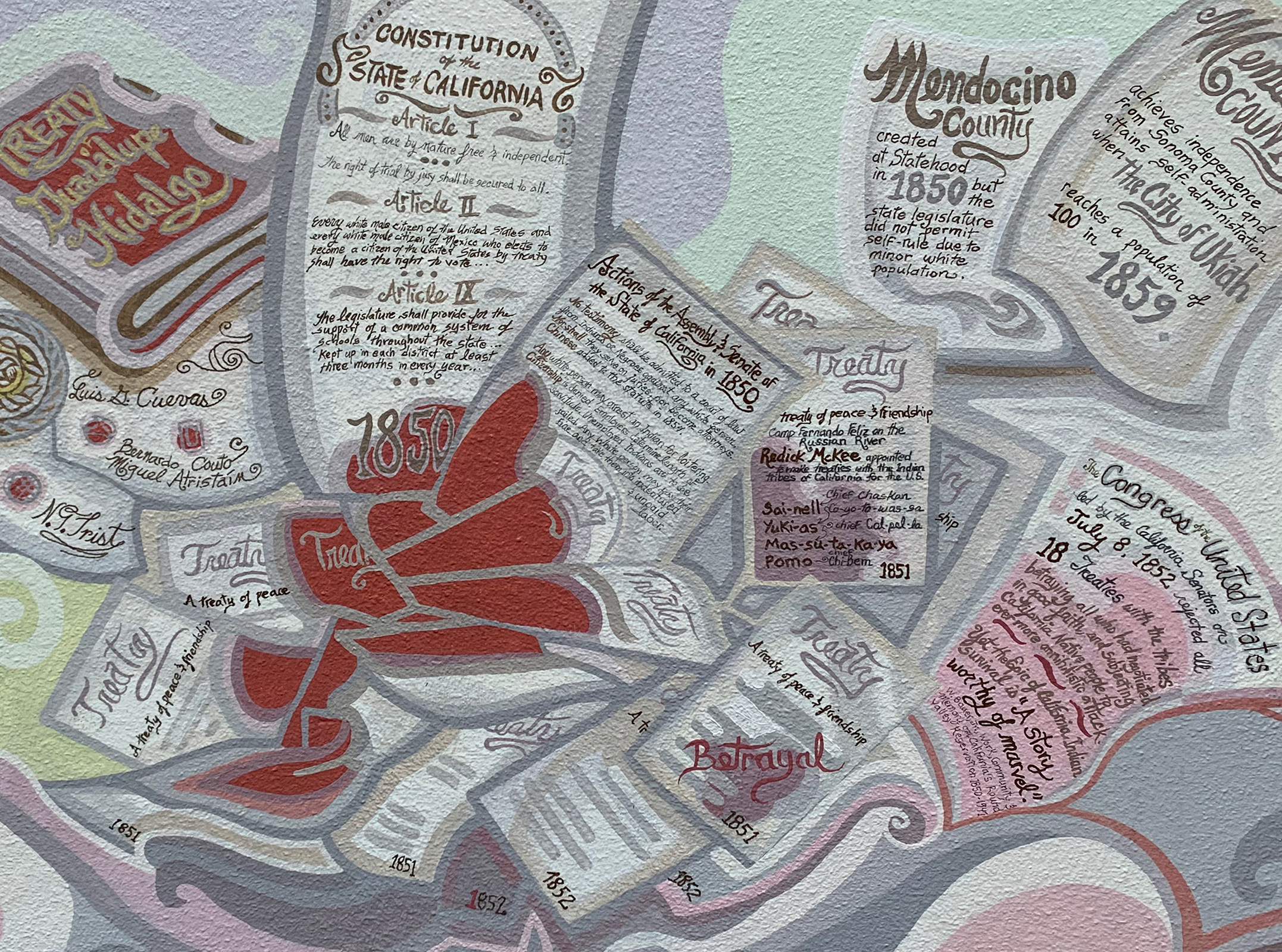

The cascade of treaties depicted in the mural are those negotiated with over 100 Native tribes by federal Indian Affairs representative Redick McKee, in an effort to put an end to the carnage and suffering.
After three years there were eighteen treaties entered in good faith on both sides. Among them is the treaty signed in 1851 by Pomo chieftain CheBem at Camp Fernando Feliz a few miles south of Ukiah on the Russian River.
However, these treaties were all rejected by the US congress, led by the California Senators in a closed door session.
This was another betrayal after the Indians had relinquished their land, now having neither home nor security.
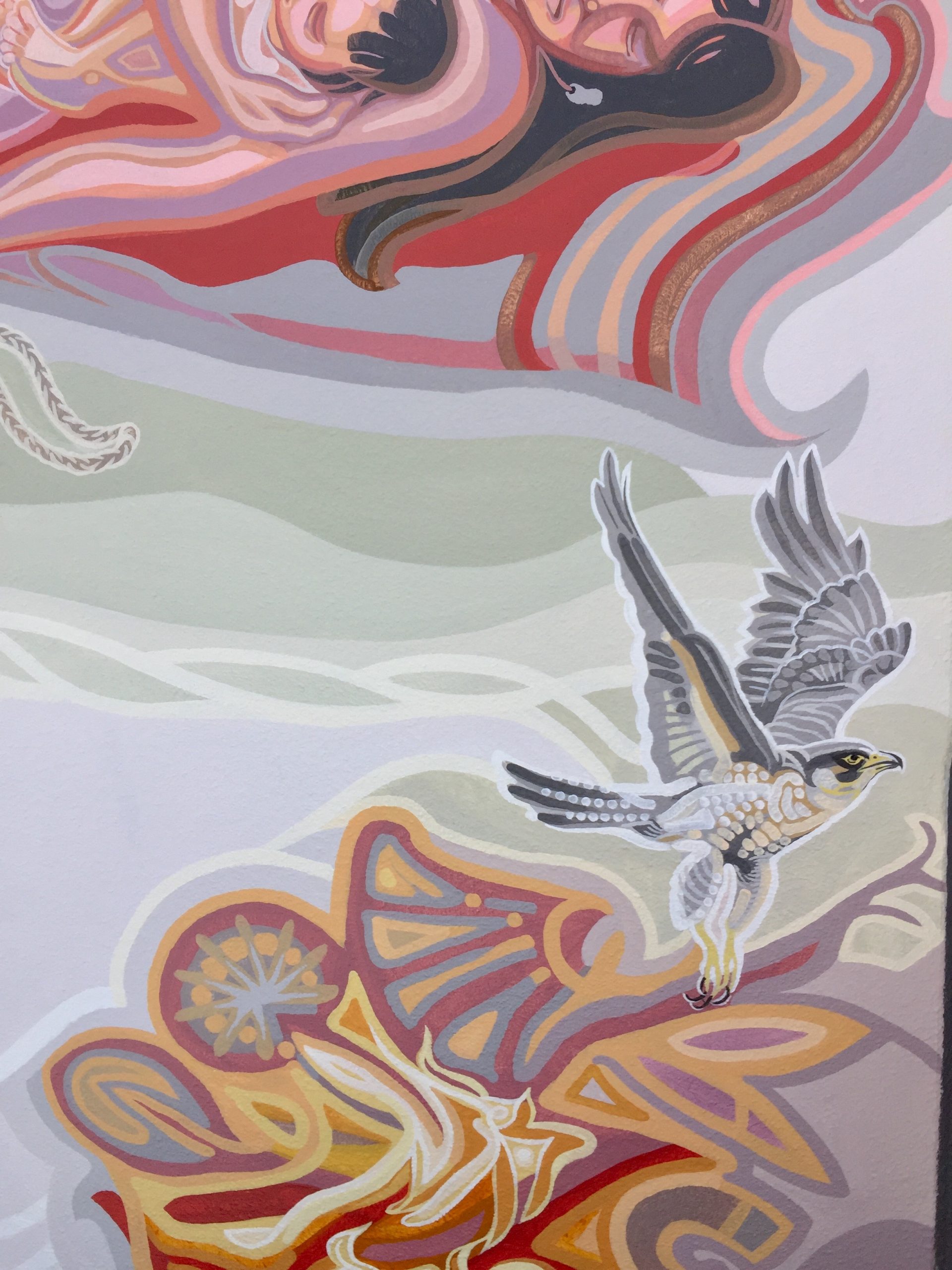
The bright part of this dismal story is that of survival, of the people and their culture not being lost. This is the meaning of the hawk rising from a funeral fire in the truth panel.
Also, governments – through legislation AND administration – can right wrongs, or at least acknowledge them:
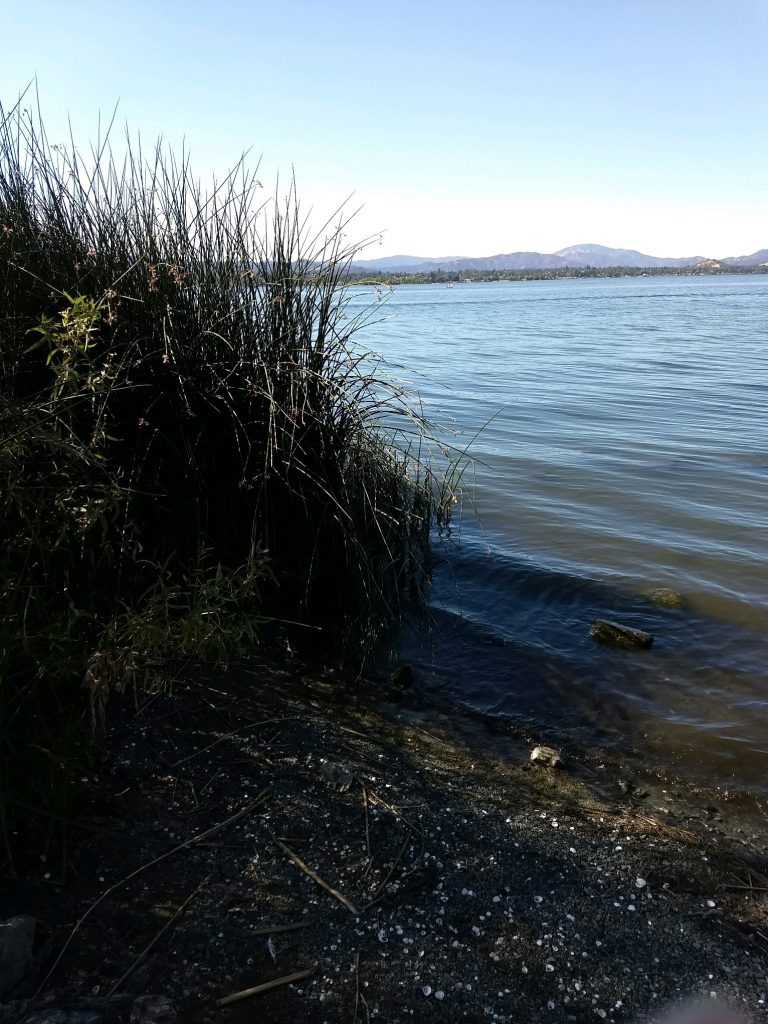
The Bloody Island Massacre occurred in 1850 on an island in Clear Lake in our neighboring Lake County, and then was repeated at Rancho Yokaya, just a few miles south of Ukiah. The massacres were in retaliation for the deaths of Andrew Kelsey and Charles Stone, white cattle ranchers who were notoriously cruel. They forced Pomo to work as laborers, locking them in pens at night, starving, beating, and hanging them from trees. They murdered a boy who allegedly flirted with a young woman Kelsey forced to be his concubine. The band had had enough.
After wetting the men’s gunpowder, they murdered both and fled. But not to Clear Lake.
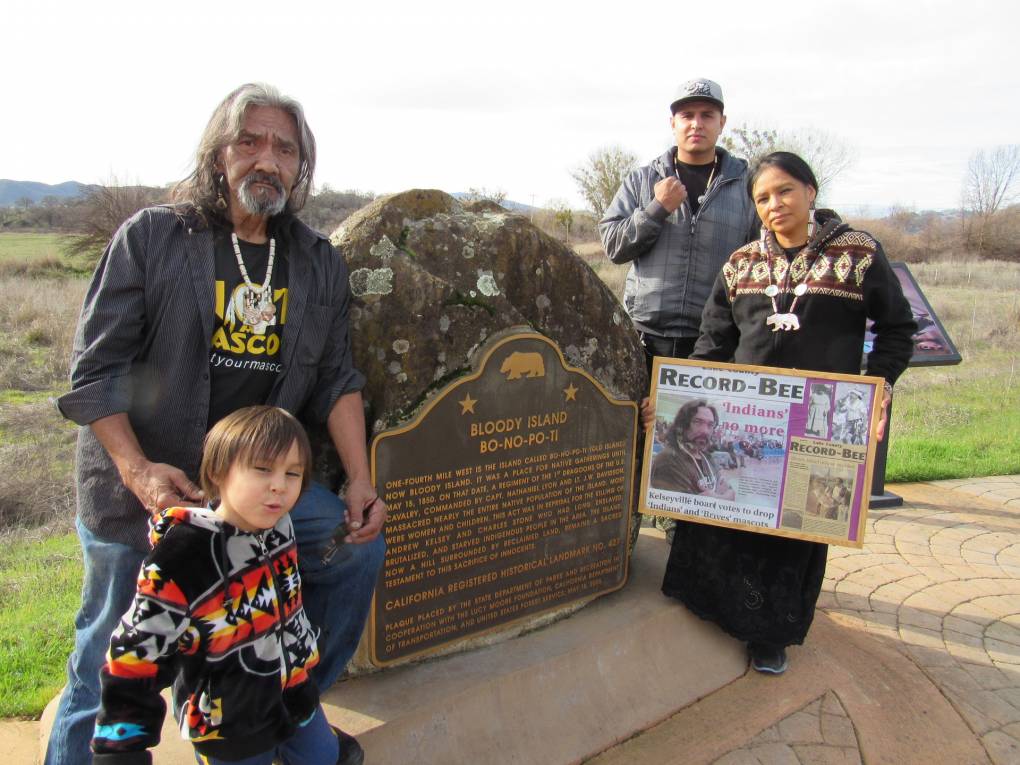
Nonetheless, the US Cavalry carried out orders to go up to the island where Pomo gathered to fish and collect medicinal plants and to kill as many as possible.
Clayton Duncan, his 4-year-old grandson Misuenculla, Lisa Peake and Rudy Alvarez at the California Historical Landmark commemorating the massacre at Bloody Island. (Suzie Racho/KQED)
What happened after hundreds of innocent men, women and children were murdered?
Kelsey got a town named after himself.

But also, years later, gains were made by the descendants of a little 6-year-old girl who survived by breathing through a hollow reed while the waters of Clear Lake turned red around her. Her grand- and great-grand-children moved the state to erect this monument.
It’s a small achievement, but hard fought, and advances the cause of greater truth in governance and administration.
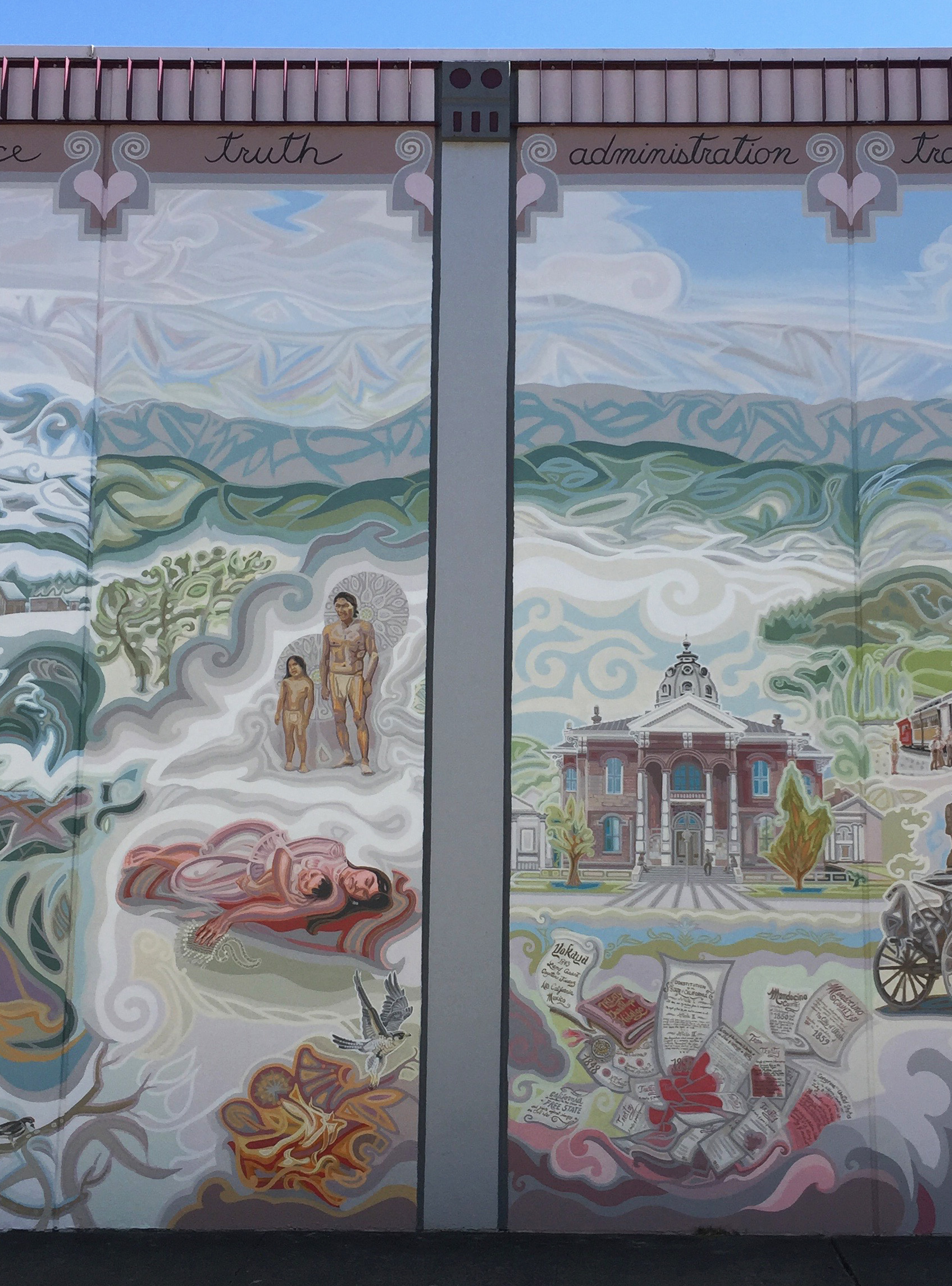
Next panel: